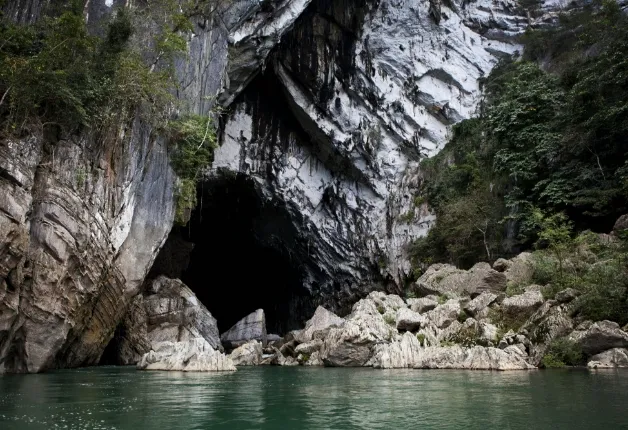How Did Laos' National Park Achieve World Heritage Status?

Synopsis
Key Takeaways
- Hin Nam No National Protected Area officially recognized as a UNESCO World Heritage Site.
- This marks a significant milestone for Laos in showcasing its natural heritage.
- It is the fourth World Heritage Site in the country and part of a transboundary park with Vietnam.
- The area boasts rich biodiversity and unique cultural heritage.
- Collaboration among officials and local communities is vital for conservation efforts.
Vientiane, July 19 (NationPress) The Hin Nam No National Protected Area in Laos has been officially recognized as a UNESCO World Heritage Site, igniting a wave of enthusiasm throughout the nation. Many citizens view this as a significant achievement in highlighting Laos' abundant natural heritage and its dedication to conserving vital natural resources.
This national park marks the fourth UNESCO World Heritage Site in Laos, and it holds particular importance as it is part of a transboundary extension of Vietnam's Phong Nha-Ke Bang National Park, which is noted as the first transboundary natural world heritage site between Laos and Vietnam, reported the Xinhua News Agency.
Jenchila, an office worker in the capital, Vientiane, expressed immense pride and joy following the announcement, commending the collaboration of various sectors and officials that led to this remarkable accomplishment.
"For a small nation like ours, this is a monumental occasion. It demonstrates to the world that Laos possesses something truly unique, not only in terms of culture but also in its stunning natural beauty and biodiversity. Every Laotian should take pride in this achievement," Jenchila remarked on Saturday.
She also conveyed hope that this success would motivate further efforts to safeguard other important natural and cultural sites in Laos and amplify global recognition of the country's rich heritage.
Khamsavanh, a 27-year-old from Savannakhet province in southern Laos, urged the government to promote this achievement more broadly, allowing citizens nationwide and Laotians living abroad to appreciate its significance.
"I hope this recognition serves as a catalyst for heightened environmental awareness in Laos," he stated.
"During my school years, we learned about Laos' abundant natural resources, and I have always wished that every Laotian keeps that in mind. To ensure the preservation of this wealth in the long run, we all must unite and take responsibility for protecting what we have," he added.
Nidthida, a Vientiane resident, expressed her pride in this accomplishment and extended gratitude to everyone involved in making it happen. She emphasized the need for ongoing collaboration among officials at all levels and local communities to maintain strong conservation measures, education, and active participation of local people to keep the park safe and thriving.
After the park was officially designated as a UNESCO World Heritage Site, the news rapidly spread on social media throughout Laos, with many individuals sharing articles about the achievement and expressing their happiness, pride, and excitement for the recognition.
The Hin Nam No National Protected Area is an ecological wonder that spans approximately 94,121 hectares in southeastern Laos. This stunningly beautiful and diverse protected area is home to some of the planet's most remarkable and mysterious biodiversity, featuring a variety of ecosystems, including untouched forests, awe-inspiring waterfalls, and complex cave systems.
The park is inhabited by an astonishing range of species, including rare and exotic birds, mammals, reptiles, and plants. It is also home to several ethnic minority groups, each with their own unique traditions, customs, and lifestyles.









